Kaikai Ge
Learning to Expand Audience via Meta Hybrid Experts and Critics for Recommendation and Advertising
May 31, 2021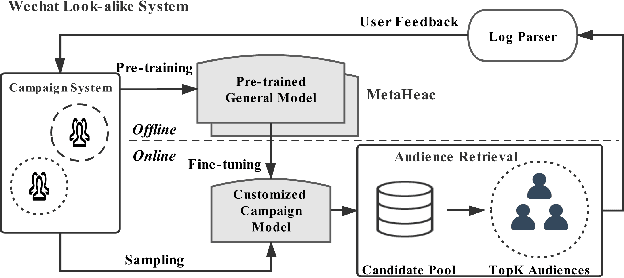

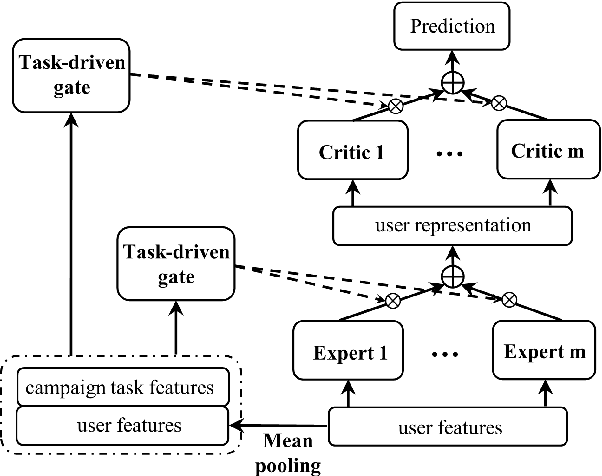
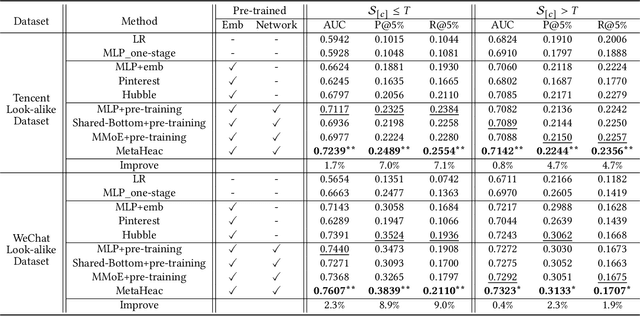
Abstract:In recommender systems and advertising platforms, marketers always want to deliver products, contents, or advertisements to potential audiences over media channels such as display, video, or social. Given a set of audiences or customers (seed users), the audience expansion technique (look-alike modeling) is a promising solution to identify more potential audiences, who are similar to the seed users and likely to finish the business goal of the target campaign. However, look-alike modeling faces two challenges: (1) In practice, a company could run hundreds of marketing campaigns to promote various contents within completely different categories every day, e.g., sports, politics, society. Thus, it is difficult to utilize a common method to expand audiences for all campaigns. (2) The seed set of a certain campaign could only cover limited users. Therefore, a customized approach based on such a seed set is likely to be overfitting. In this paper, to address these challenges, we propose a novel two-stage framework named Meta Hybrid Experts and Critics (MetaHeac) which has been deployed in WeChat Look-alike System. In the offline stage, a general model which can capture the relationships among various tasks is trained from a meta-learning perspective on all existing campaign tasks. In the online stage, for a new campaign, a customized model is learned with the given seed set based on the general model. According to both offline and online experiments, the proposed MetaHeac shows superior effectiveness for both content marketing campaigns in recommender systems and advertising campaigns in advertising platforms. Besides, MetaHeac has been successfully deployed in WeChat for the promotion of both contents and advertisements, leading to great improvement in the quality of marketing. The code has been available at \url{https://github.com/easezyc/MetaHeac}.
Learning to Warm Up Cold Item Embeddings for Cold-start Recommendation with Meta Scaling and Shifting Networks
May 11, 2021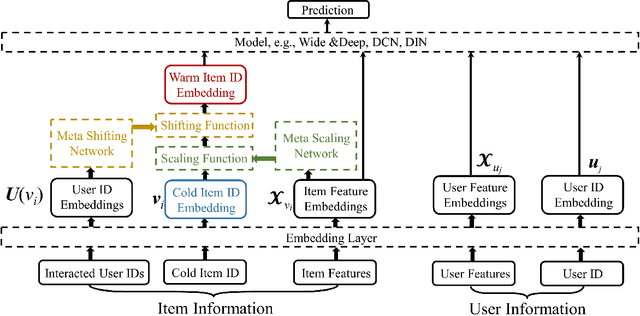
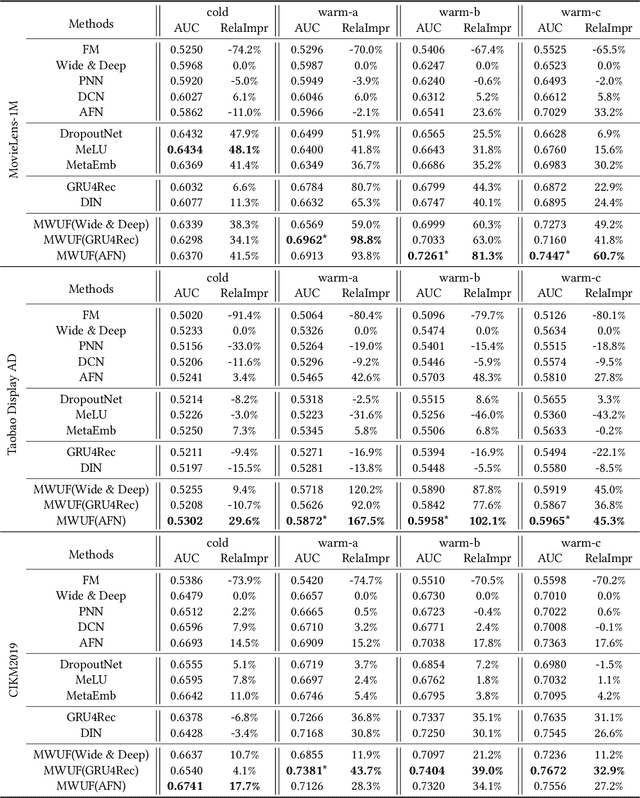
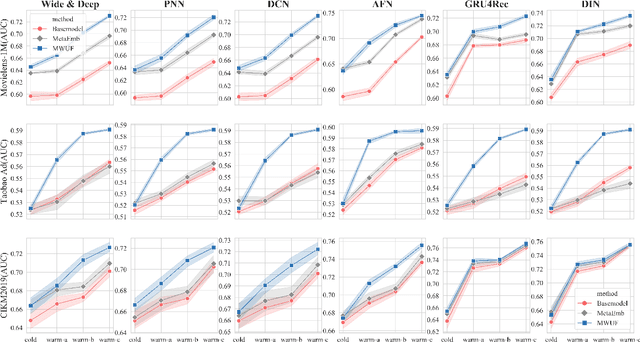
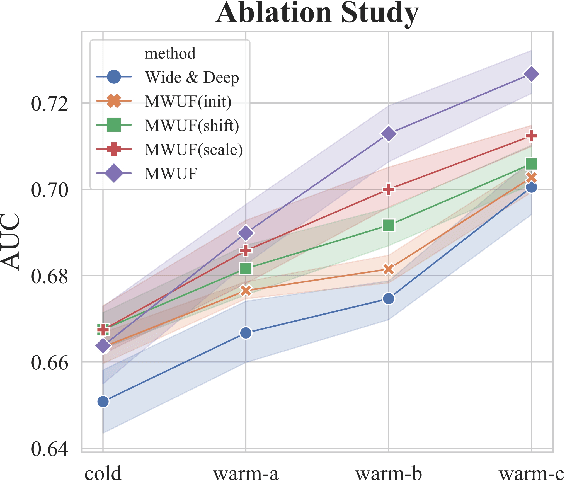
Abstract:Recently, embedding techniques have achieved impressive success in recommender systems. However, the embedding techniques are data demanding and suffer from the cold-start problem. Especially, for the cold-start item which only has limited interactions, it is hard to train a reasonable item ID embedding, called cold ID embedding, which is a major challenge for the embedding techniques. The cold item ID embedding has two main problems: (1) A gap is existing between the cold ID embedding and the deep model. (2) Cold ID embedding would be seriously affected by noisy interaction. However, most existing methods do not consider both two issues in the cold-start problem, simultaneously. To address these problems, we adopt two key ideas: (1) Speed up the model fitting for the cold item ID embedding (fast adaptation). (2) Alleviate the influence of noise. Along this line, we propose Meta Scaling and Shifting Networks to generate scaling and shifting functions for each item, respectively. The scaling function can directly transform cold item ID embeddings into warm feature space which can fit the model better, and the shifting function is able to produce stable embeddings from the noisy embeddings. With the two meta networks, we propose Meta Warm Up Framework (MWUF) which learns to warm up cold ID embeddings. Moreover, MWUF is a general framework that can be applied upon various existing deep recommendation models. The proposed model is evaluated on three popular benchmarks, including both recommendation and advertising datasets. The evaluation results demonstrate its superior performance and compatibility.
Transfer-Meta Framework for Cross-domain Recommendation to Cold-Start Users
May 11, 2021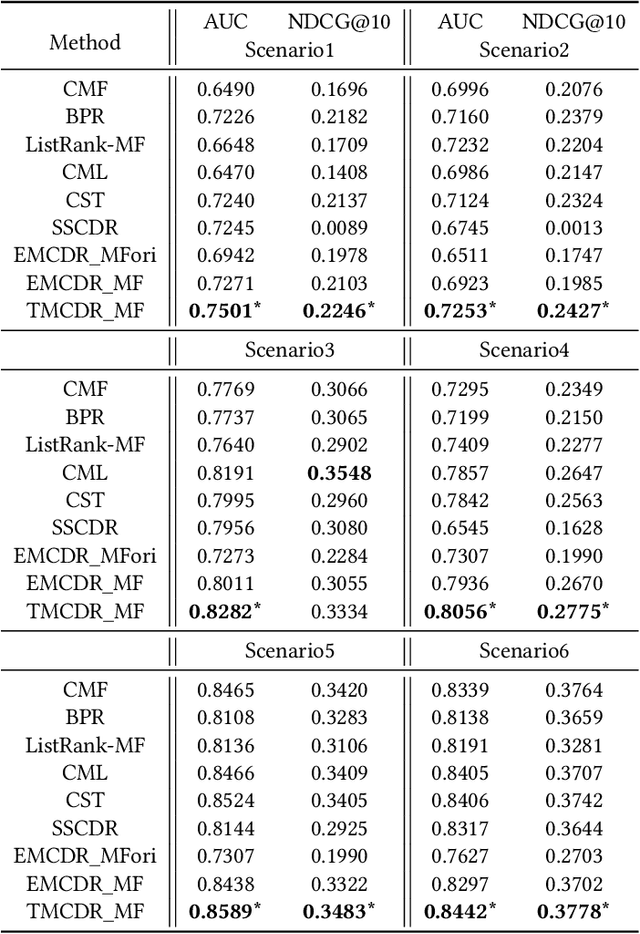
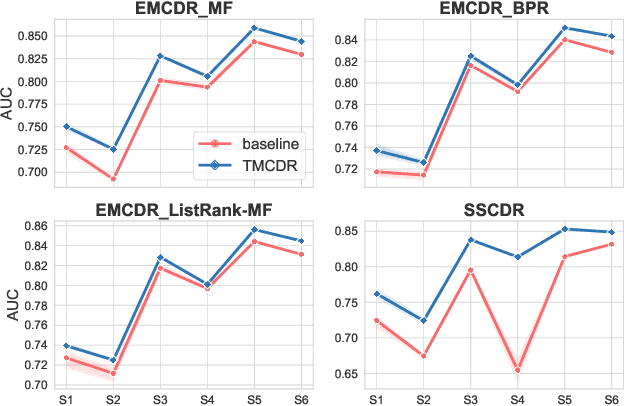
Abstract:Cold-start problems are enormous challenges in practical recommender systems. One promising solution for this problem is cross-domain recommendation (CDR) which leverages rich information from an auxiliary (source) domain to improve the performance of recommender system in the target domain. In these CDR approaches, the family of Embedding and Mapping methods for CDR (EMCDR) is very effective, which explicitly learn a mapping function from source embeddings to target embeddings with overlapping users. However, these approaches suffer from one serious problem: the mapping function is only learned on limited overlapping users, and the function would be biased to the limited overlapping users, which leads to unsatisfying generalization ability and degrades the performance on cold-start users in the target domain. With the advantage of meta learning which has good generalization ability to novel tasks, we propose a transfer-meta framework for CDR (TMCDR) which has a transfer stage and a meta stage. In the transfer (pre-training) stage, a source model and a target model are trained on source and target domains, respectively. In the meta stage, a task-oriented meta network is learned to implicitly transform the user embedding in the source domain to the target feature space. In addition, the TMCDR is a general framework that can be applied upon various base models, e.g., MF, BPR, CML. By utilizing data from Amazon and Douban, we conduct extensive experiments on 6 cross-domain tasks to demonstrate the superior performance and compatibility of TMCDR.
Real-time Attention Based Look-alike Model for Recommender System
Jun 12, 2019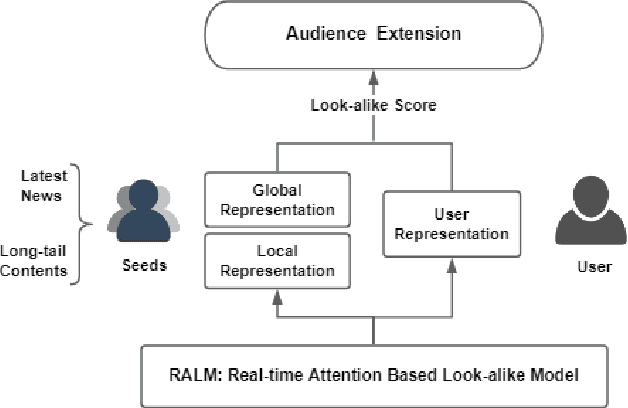
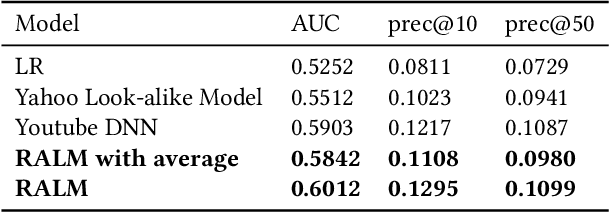
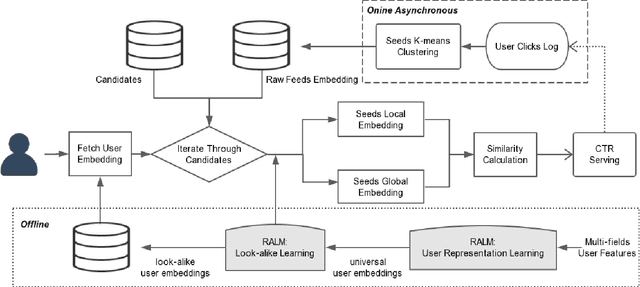
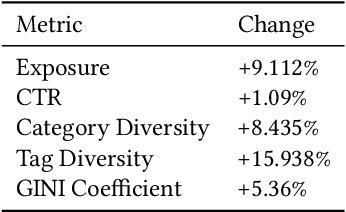
Abstract:Recently, deep learning models play more and more important roles in contents recommender systems. However, although the performance of recommendations is greatly improved, the "Matthew effect" becomes increasingly evident. While the head contents get more and more popular, many competitive long-tail contents are difficult to achieve timely exposure because of lacking behavior features. This issue has badly impacted the quality and diversity of recommendations. To solve this problem, look-alike algorithm is a good choice to extend audience for high quality long-tail contents. But the traditional look-alike models which widely used in online advertising are not suitable for recommender systems because of the strict requirement of both real-time and effectiveness. This paper introduces a real-time attention based look-alike model (RALM) for recommender systems, which tackles the challenge of conflict between real-time and effectiveness. RALM realizes real-time look-alike audience extension benefiting from seeds-to-user similarity prediction and improves the effectiveness through optimizing user representation learning and look-alike learning modeling. For user representation learning, we propose a novel neural network structure named attention merge layer to replace the concatenation layer, which significantly improves the expressive ability of multi-fields feature learning. On the other hand, considering the various members of seeds, we design global attention unit and local attention unit to learn robust and adaptive seeds representation with respect to a certain target user. At last, we introduce seeds clustering mechanism which not only reduces the time complexity of attention units prediction but also minimizes the loss of seeds information at the same time. According to our experiments, RALM shows superior effectiveness and performance than popular look-alike models.
 Add to Chrome
Add to Chrome Add to Firefox
Add to Firefox Add to Edge
Add to Edge